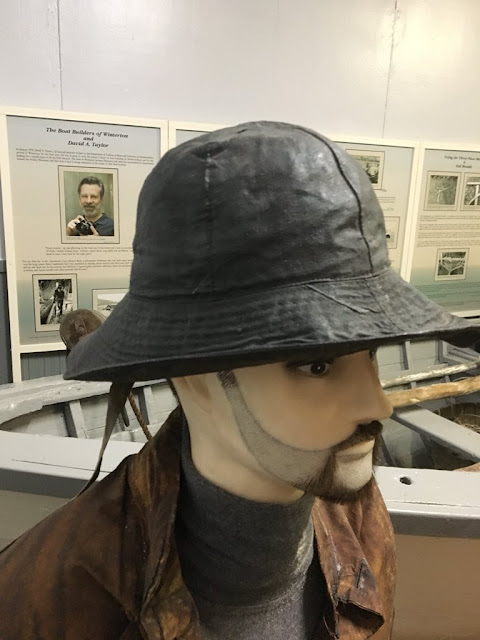 |
| Close-up of an embroidered panel for a quilt, St. Lunaire-Griquet. Photo by Lisa Wilson. 2010 |
Today's Folklore Photos come from St. Lunaire-Griquet collection on Memorial University's Digital Archives Initiative. St. Lunaire-Griquet is scenic community located about twenty minutes north of St. Anthony on Newfoundland's Great Northern Peninsula. It is a community of approximately 1000 residents, spread across a region that was once two distinct communities. During the 1950s, sudden development in the area precipitated the conjoining of St. Lunaire and Griquet into one incorporated town-site. Unlike the vast majority of GNP communities, St.-Lunaire-Griquet has always seen a continual rise in population rather than a decline, with exception to the cod moratorium years, which invariable saw many people leave their homes to pursue work elsewhere. It is often said that the local post office marks the spot where the two communities come together.
The French began visiting this region as early as the 16th century, in order to exploit the renowned cod fishery. Despite the early arrival of these seasonal fishermen, the vicinity was not officially mapped until 1784, when the infamous French sailor Liberge de Granchain pursued the undertaking. He is still remembered for his work in the area, by an island near St. Lunaire Bay that bears his name. Granchain Island still holds evidence of the French presence, by the archaeological remains of French bread ovens that can be observed on the site.
The St. Lunaire-Griquet inventory is part of a founding collection for the Great Northern Peninsula Textiles Archive and Learning Center. This project, based in Conche, NL, is an on-going initiative to document and preserve the textile-based crafts that are being created on Newfoundland's Northern Peninsula. The items in this collection were gathered between May and July of 2010 and include photographs of textile craft objects such as embroidered and pieced quilts, knitted items, and Grenfell-style coats. This inventory also includes audio clips of craftspeople discussing their particular textile-based skills and practices.
If you want to learn more about this collection click
here and if you want to listen to an interview with Mary Bussey about textiles click
here or to hear about changes to the Northern Peninsula click
here.
 |
| Crochet pillow made by Mary Bussey's mother, St. Lunaire-Griquet. Photo by Lisa Wilson. 2010 |
 |
| A pair of slippers knitted by Mary Bussey, St. Lunaire-Griquet. Photo by Lisa Wilson. 2010 |











